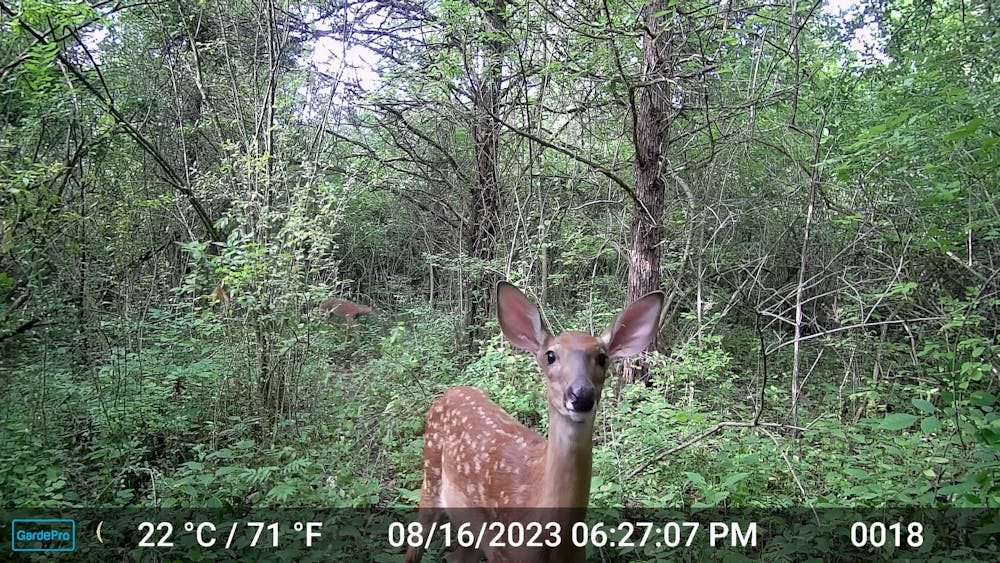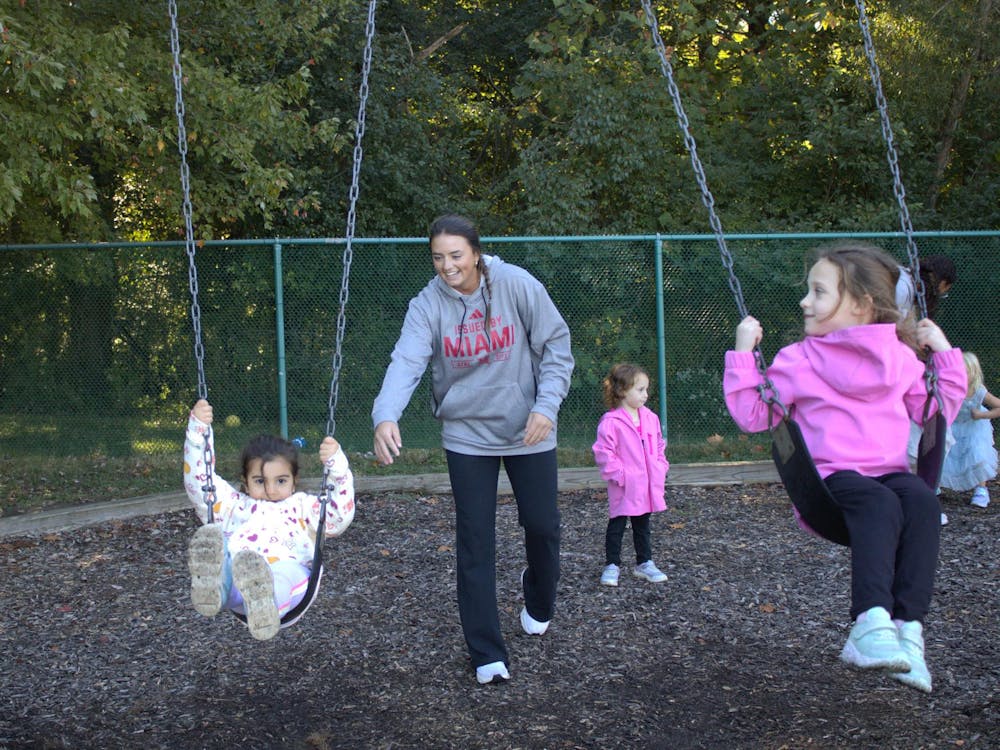Beginning on Nov. 18, the Miami Natural Areas will be open to deer hunting, a continuation of the deer management plan first implemented in 2022.
The hunting period will go until Feb. 4, an 11-week season that falls roughly in line with the second half of Ohio's deer hunting season. The Natural Areas Committee decided in late 2021 that the most effective way to reduce the local deer population was controlled hunting, paving the way for the first hunting season last year.
“There has been some hesitancy before because of potential conflict between other recreationists and the hunters about the safety concern and everything,” said Nancy Feakes, the field manager of the Natural Areas. “But the biggest source of danger resulting from a hunting season, particularly in archery hunting season, is people falling out of the tree.”
Due to the often high public traffic within the Natural Areas, several safety measures have been implemented.

Signs informing hikers about the hunting season can be found at major trailheads around campus
Miami is only allowing bow hunting, and hunting is only allowed from tree stands, which means that if a hunter misses, their arrow hits the ground and does not continue horizontally. Furthermore, stands are required to be 50 yards from trails, and hunters were required to pass an accuracy test to be selected.
Out of a pool of nearly 100 applicants, 45 hunters were selected to participate. Along with helping reduce the population, hunters are required by Miami to use the deer in some way after the hunt, whether with meat, hide or antlers.
Each hunter is allowed either three or four weeks to hunt and is limited to a maximum of two deer. This is down from three last year, as the deer population has been affected, and possibly reduced further, by epizootic hemorrhagic disease.
Despite the presence of hunters, Feakes says that users of the Natural Areas have no reason to hesitate about spending time in the Natural Areas during the hunting season. She also explained that the season was also selected to occur when Miami goes on winter break and when the trails are generally less crowded.
Moreover, the first season of hunting last year has been considered a success with a harvest count of 15 deer and later studies indicating a reduction in deer density, giving early confidence in the effectiveness of this method.
“Comparison between the western area and the Bachelor-Reinhardt [area] has significantly fewer deer this year,” said Feakes.
Elea Cooper, a fifth-year student in the combined Master of Environmental Science program, leads the research for this program. Cooper previously researched the effects deer have on plant life but is now focusing on studies of deer density for her master's thesis.
Enjoy what you're reading?
Signup for our newsletter
“Deer density went down in plots I studied, so I think hunting had an impact on lowering deer density,” Cooper said.
She also stressed the need to continue to monitor the population of deer after she leaves, in order not to “overdo it” when hunting. The reasons behind wanting to reduce the deer population in the Natural Areas are many but are primarily due to the damaging effects they have on the local ecosystem.
“We have a lot of evidence that there were a lot of negative impacts in the forest in the Natural Areas due to decades of high deer density,” said David Gorchov, a professor of biology and ecology who has been studying the impact of overabundant deer in the Natural Areas since 2010.
Between his and his students' research, Gorchov has seen the detrimental effects that deer have had on the Natural Areas.
“I remember walking in Western Woods 15, 20, 25 years ago and there were a lot more native wildflowers than there are now,” Gorchov said.
Between the negative effects of a large deer population and the tentatively positive results of the previous season, those involved in managing the Natural Areas hope that this next season will continue to be effective. Those using the trails in hunting areas during this time are required to stay on trail and leave their dogs at home and are encouraged to wear bright colors.




